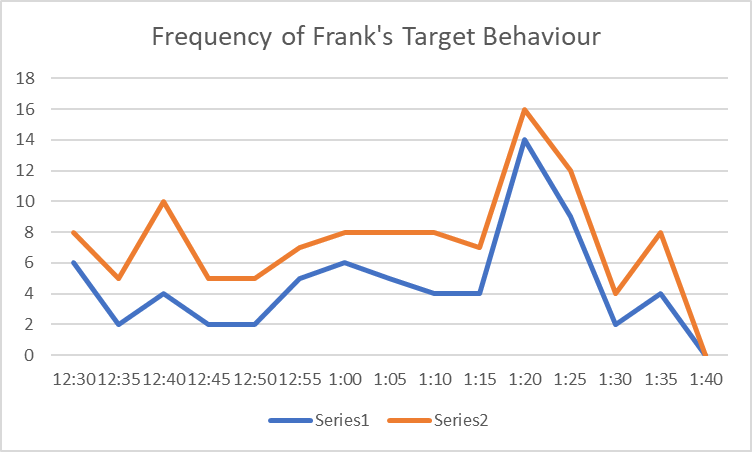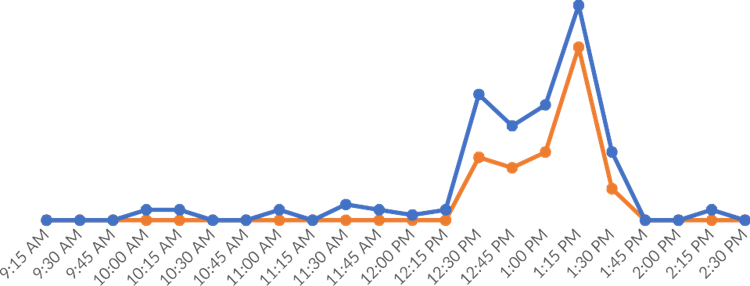Seven Dimensions and Operational Definitions of Behavior in " Death of a Salesman"
There are seven main approaches to Applied Behavior Analysis (ABA). It is recommended that these dimensions are followed by all ABA practitioners should follow. Hence, when developing a treatment plan, the following seven elements should be considered: behavioral, applied, technological, conceptually systematic, analytic, general, and effective. Each of these objectives contributes to Behavior Analysts' ultimate goal of providing meaningful change to children and families in settings other than where it is taught.
Measurement is a key component of ABA, which gathers data on various behaviors or skills. Using data correctly when taking measurements and gathering data will allow behavior analysts to assess situations and behaviors accurately.Measuring and gathering data correctly will enable behavior analysts to assess a scenario or behavior accurately. Additionally, measurement allows you to track your progress and identify any setbacks, ensuring that the treatments you've put in place are working. As this study examines a journal article regarding nail-biting and applies ABA's seven dimensions to it, as well as looking at several types of data collection for Frank, a 10-year-old boy, it will summarize the seven dimensions of ABA and show how they can be measured.
Seven Dimensions
Analysis of the Journal Article:
In his article "Self-Administered Behavior Modification to Reduce Nail Biting: Incorporating Simple Technology to Ensure Treatment Integrity," Andrew Craig examines how nail-biting is a typical behavior modification target (Craig, 2010). In this study, self-monitoring was used combined with a differential reinforcement system to decrease the incidence of nail-biting, using a token-based self-monitoring system (Craig, 2010). Based on an ABAB design, the author attempted a baseline over nine days, treatment on weekdays, and reversal on weekends lasting for 72 days. The study was recorded and monitored throughout its. As this study examines a journal article regarding nail-biting and applies ABA's seven dimensions to it, as well as looking at several types of data collection for Frank, a 10-year-old boy, it will summarize the seven dimensions of ABA and show how they can be measured in a span of 78 days (Craig, 2010).
As part of the DRO schedule, a preference assessment was conducted to determine which reinforcers would be most effective. An assessment was made by the author's roommate who casually observed how much time the author spent performing various leisure activities (Craig, 2010). Among the three activities the author did most, he played video games, watched TV, and read nonacademic texts. The three activities mentioned above were restricted during treatment unless they were being used as reinforcers.
While biting his nails, the participant collected baseline data and had full control over the reinforcers he used during treatment. The tokens gained were worth 15 minutes of leisure time each, and when the time to exchange them came, the subject would give these tokens to his roommates. In the event tokens were not cashed in by the end of the day, the tokens were lost. After the DRO treatment was implemented, nail-biting was reduced to almost two times a day on average. After the DRO medication was reinstated, nail-biting significantly decreased.
Behaviour Analysis: The Seven Dimensions
Treatment strategies must consider the seven dimensions of applied behavior analysis. These dimensions are behavioral, applied, technological, conceptually systematic, analytical, general, and effective. In accordance with the above synopsis of the study, here is an outline of the target behavior of nail-biting.
As defined by Baer, Wolf, and Risley (1968), the behavioral dimension indicates target behaviors that can be observed and measured. Nail-biting is an observable and measurable target behavior. Putting one or more fingers in the mouth and biting the nail with the teeth can be considered nail-biting. By increasing or decreasing the applied dimension, it becomes a socially important behavior (Baer et al, 1968). In this case, the subject's nail-biting behavior would be reduced to zero occasions.
The technological dimension involves the description of procedures in a clear and concise manner so that others can recreate them correctly (Baer et al., 1968). During the nail-biting study, preferences were assessed, baseline data collected, and differential reinforcement implemented. The dimension of conceptually systematic is describing how the processes will replace the goal behavior (Baer et al, 1968). To determine which reinforcers elicited the strongest incentive to reduce nail-biting, a preference assessment was employed. Following the preference evaluation, baseline data was gathered to determine the frequency of nail-biting. The replacement behavior for nail-biting was implementing a differential reinforcement treatment plan using a token economy.
In a data-driven analytical model, behavior occurrence and non-occurrence are explained based on behavioral patterns and trends (Baer et al., 1968). The nail-biting activity was at an all-time high during baseline. As a result of differential reinforcement, nail-biting became less common. As soon as a baseline was reintroduced, nail-biting increased, and this pattern continued throughout.
Changes in behavior that stay overtime, arise in various situations, or extend across other behaviors are caused by the dimension of generality (Baer et al, 1968). Based on the participant's findings, social support from both family and friends will reduce nail-biting behavior without requiring direct observation from another person (Craig, 2010). By analyzing the impact of replacement behavior on the target behavior, the effective dimension can be assessed. By using this approach, Baer et al. 1968 intended to drastically improve the behavior of their subjects. Due to the fact that the subject only tested the nail-biting in one environment, his home, it was impossible to estimate if this intervention was effective in other environments.
A Case Study
Operational Definitions:
Based on the case study, two behaviors were clearly observed and defined: off-task behavior and property destruction. Any activity involving Frank's off-task behavior, such as resting his head on a surface, looking at objects on his desk, disturbing his students nearby, or going to the restroom as a way to relax, is considered off-task behavior. Frank's yelling, kicking classroom furniture, or slamming any surface is considered property destructive behavior.
Appropriate Data Recording:
A suitable way to measure Frank's off-task behavior would be to record the duration and frequency of his off-task behaviors. Obtaining baseline data about Frank's off-task time will facilitate the application of interventions to teach Frank replacement behaviors. As long as Frank can find new behaviors to replace the off-task behaviour, he will be able to complete his tasks on time. A token economy may be made available to Frank when he exhibits good behavior and may be converted into time for downtime if necessary. The collection of data relating to property destruction duration is essential for developing a baseline for de-escalating the situation in a way that prevents other furniture from being damaged.
To determine Frank's most likely off-task times, frequency data should be collected. It may be appropriate to use the token economy downtime in classes offering only Language Arts and Social Studies. Analysts should watch for variations and trends in frequency data when gathering it. It is crucial that the analyst create a strategy to reduce the frequency with which this behavior occurs if the graph is variable.
Duration:
A hypothetical hour of Frank's off-task behavior was monitored through a series of hypothetical data entries. During that time, nine occurrences of off-task behavior were observed, with the longest lasting eight minutes and the shortest lasting 10 seconds. It was found that Frank was off the task for 25 minutes and 30 seconds, or 42.5% of the time during the 60-minute time frame. Below is a graph showing the information gathered over the period of time. In the following graph, you can see that the graph's variability is unstable, and there is no corresponding trend line.
Frequency:
For 70 minutes, the hypothetical frequency data for both of Frank's target behaviors were observed. During that period, Frank was off task 44 times in the span of 70 minutes. He spent most of his time putting his head down or toying with his pencil rather than working. During those 70 minutes, property destruction occurred 74 times. At 1:15 p.m., he was allowed to go to the bathroom, which he utilized as an escape mechanism. When Frank was redirected back to the classroom by a student, he started destroying things. In Frank's classroom, the teacher reportedly observed him throwing the garbage can, picking up trash and putting it in the toilet, tearing paper towels and throwing them at the teacher. The de-escalation strategy consisted of waiting it out if Frank was not a threat to himself or his classmates. As a way to obtain treatment data, the subject utilized token-based differential reinforcement.
According to these results, baseline rates of nail-biting were high and varied significantly between sessions. Every day, a sample of 16 to 12 bites was collected.

Series 1 represents Off-Task Frequency.
Series 2 Represents Property Destruction
Interval Data
For the hypothetical target behaviors, partial interval data was gathered. The target behaviors were observed for 15 minutes at a time, and if Frank demonstrated any of them during that time, they were regarded as valid. Based on the graph, it appears that these 5-hour target behaviors were overestimated. As indicated by the frequency data, Frank had a busy afternoon taking action on the target. By observing interval data, it is evident that the target behaviors were more severe than the rest of the day; therefore, frequency and duration data should be collected in order to properly evaluate the target behaviors.

Latency
Nine trials were conducted to gather latency data for the hypothetical behaviors. Observations occurred between 9:30 am and 12:30 pm, for a 3 hour period of time. There was a total latency time of 1 hour and 35 seconds between the time the subject was asked and the time he was on task. The longest latency time was 16 minutes. For nearly 33% of observed sessions, clients were off-task and required redirected attention to the task.
Conclusion
This journal article regarding nail-biting discussed how differential reinforcement could be used to measure nail-biting. Using the token economy principle, the subject provided differential reinforcement to decrease nail-biting behavior based on the data collected himself. According to the author, the treatment plan was broken down into seven dimensions to ensure that it met the requirements for applied behavior analysis. As a result of the author's case study on Frank's behavior, operational definitions were developed for his off-task activities and property destruction. A duration and frequency collection would have been appropriate for the case study.
Reference
Arthur Miller Death of a salesman, act I PDF free download. ARTHUR MILLER Death of a Salesman, Act I PDF Free Download. (n.d.). Retrieved March 4, 2022, from https://docplayer.net/20862183-Arthur-miller-death-of-a-salesman-act-i-1557.html
Hughes L. (1994). Mother To Son. Retrieved from https://www.poetryfoundation.org/poems/47559/mother-to-son
Hayden, R. (1962). Those Winter Sundays. The Heath Anthology of American Literature, 2.